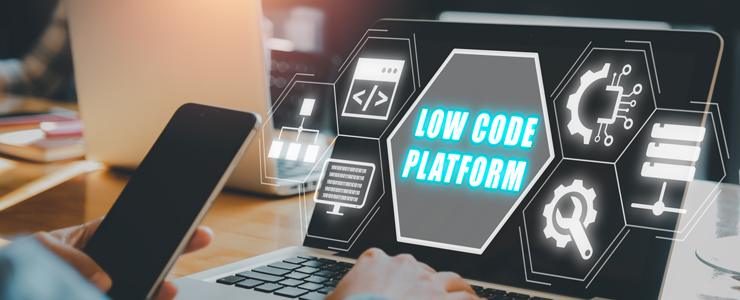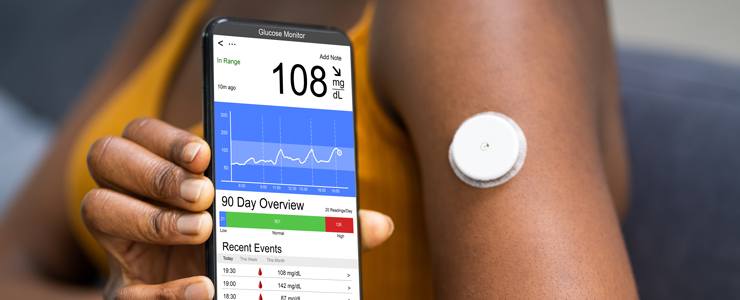The IoT continues to grow apace through applications that help enterprises and society to automate, improve productivity and efficiency, become more sustainable and innovate. During 2023, we saw activity around electric vehicle charging, IoT security and connected energy systems; what IoT trends is this year likely to bring?
Here, we look at six IoT trends that businesses planning, or running, connected solutions need to know about.
Fortifying the frontline: IoT security in the age of AI
Cybersecurity wages a constant war against growing, and evolving, cyberthreats so enterprises must be ever vigilant and prepared. As threats to the IoT evolve, IoT security must not be found wanting.
Solution providers, application providers and product managers who are building connected products need to understand existing and pending legislation, including the UK’s Product Security and Telecommunications Infrastructure (PSTI) Act, the EU’s Cyber Resilience Act, and the USA’s IoT Cybersecurity Improvement Act (for devices used by federal government). The PSTI (Product Security) regime is imminent, coming into effect on 29 April. It will regulate consumer products, such as routers, webcams and connected fridges, to be free of default passwords, include vulnerability disclosure policies and be transparent about update support periods.
Those building connected products must be aware of all security legislation that is relevant for their IoT solutions, including sector-specific legislation, and act to ensure compliance.
Artificial intelligence (AI) bolsters IoT security through advanced threat detection, secure communication between devices, predictive analysis and automated real-time response, but cybercriminals use AI too, to enable more threats – and more sophisticated threats – through AI-generated spear phishing emails, malware and more.
Enterprises strengthening IoT security with AI mustn’t be complacent, or neglect continuous updates and testing, because they have AI systems to capture and respond to threats. They must also be aware that all digital solutions have an attack surface and that cybercriminals may target AI algorithms to break into AI systems.
Defend, Detect, React
Taking a 360-degree approach to IoT security , technology capabilities, standards and best practices work together to defend against, detect and react to cyberthreats. IoT service providers must harden their networks but also share network-side security insights and security services with their customers.
IoT security will continue to be a key focus in 2024 because enterprises’ data and reputations are at constant risk. Some IoT applications are prime targets for cybercriminals because they exchange high value data. To mitigate the risk of data breaches, and the financial and reputational consequences they bring, companies must prioritise IoT security in 2024.
 eSIM comes of age: a true single SIM for global deployments
eSIM comes of age: a true single SIM for global deployments
The IoT industry has high expectations of the widespread adoption of the new SGP.32 standard, which is set to shake up remote SIM provisioning. This evolution of eSIM standards is changing the way IoT mobile virtual network operators (MVNOs) work with the market.
SGP.32 is GSMA’s new technical specification, or standard, for remote SIM provisioning. It shifts the control of network profile downloads away from networks into devices, simplifying the interconnection arrangements that connectivity providers must manage with mobile network operators (MNOs).
This is significant for companies with IoT solutions, particularly multi-region ones that connect to local networks when they’re deployed, because it makes true factory-to-field possible. SGP.32 simplifies profile switching, which will remove cost and should help reduce time-to-market. The capability can also act to address the permanent roaming challenges in certain countries across the globe.
Not all remote SIM provisioning solutions are equal though. Organisations need to ensure their chosen provider has a wide range of eSIM profiles available to deliver true future proofing against operations, commercial and regulatory challenges.
Hear from Toby Gasston, Product Manager at Wireless Logic, who explains the benefits and considerations for using a single SIM for global deployments.
Hyper-localisation: Tailoring IoT for every corner of the globe
Global deployments of IoT devices are often spread across multiple locations and regions. Global networks with a hyper-local focus are becoming more important and indicate that the network is increasingly a differentiator when selecting a connectivity provider. With solutions varying from ultra-local services driven through the network to local support and expertise, the role of advanced networking solutions like SD-WAN (Software Defined Wide Area Network) becomes crucial.
IoT MVNOs with distributed points of presence (PoPs) provide critical capabilities to the SD-WAN community:
- Low latency – Reducing data transmission latency between the device and data processor for critical and real-time applications such as healthcare monitoring/sensors, safety applications and industrial automation. Leading MVNOs are deploying globally distributed PoPs to deliver lower latency connectivity for global deployments. Through advanced on-SIM technology and their own cores, MVNOs are developing a global network overlay, using MNOs for the radio access layer but providing cellular networking services up to and including super high throughput fixed wireless access
- Localised services – tailoring the device to the specific needs of its deployed area to, for example, align with local authority applications. This is especially the case for applications such as smart city ones, including smart lighting and traffic sensors
- Security – to protect sensitive data through localised security measures and processes, including access control and encryption from edge computing
- Redundant or primary connectivity: SIMs are increasingly a one-for-one substitution for wires. With appropriate end point equipment, SIMs can be bonded to provide several GB per second throughput. Distributed PoPs are fundamental to realising this performance.
Simplifying IoT: The rise of no code/low code solutions
Progressive simplification of the IoT space will pick up pace in 2024 as platforms evolve and solutions fragmentation resolves to enable more reliable, pre-bundled solutions. Companies can now take more of an end-to-end approach, where before they would need one provider for devices, another for connectivity and another still for application management.
Now, enterprises demand an IoT that is less do-it-yourself. Accordingly, IoT MVNOs are enhancing their services to include validated, pre-tested connectivity, elements of hardware, even sometimes application-enablement technology.
That way, they can offer enterprise customers more complete services with pre-configured, validated elements that already work together and that can be configured simply and swiftly. Fully customisable solutions offering low-code development give businesses the tools they need to quickly and easily build their own IoT platforms, through simple ‘drag and drop’ of solutions already confirmed to work.
These out-of-the-box solutions help make hyperscale IoT more achievable. This is significant for enterprises because it stands to make their deployments more economic, faster to rollout and more scalable.

Hybrid connectivity: the new frontier in IoT networks
MVNOs will continue to explore hybrid connectivity in 2024 to provide coverage where and when customers need it. Hybrid connectivity may comprise satellite bonded with cellular, or long range (LoRa) radio communication with LPWAN to provide extremely high service level agreements (SLAs) and resilient connectivity.
Over time, and particularly as 6G rolls out commercially (2035 and beyond), devices will increasingly be smart enough, using AI and software defined networking logic, to choose the most suitable bearer for the location, use case and point in time. That way, they will be able to seamlessly switch services from cellular and satellite to LoRaWAN and WiFi.
Edge computing: shifting the IoT balance from cloud to local-based solutions
We may have reached ‘peak cloud’ in some sectors and so can expect to see edge computing adoption increase in 2024 for reasons of cost and performance. Companies carrying out, for example, analytics will send smaller packets of relevant data when they undertake their analysis at the edge rather than in the cloud.
MVNOs will need to give customers good reason to locate value in the network rather than just the connectivity. This value includes security for compliance and reporting, on-device and on-net security features and functions for prevention and reaction, performance in distributed PoPs and the ability to deploy a new PoP anywhere where there is a data centre and an internet connection, to serve the edge compute industry.
For enterprise and the developer community, this means taking advantage of new ways of doing things like ‘serverless’ application development and using micro data centres.
Combining local and cloud-based solutions supports the diverse IoT use cases businesses have. An IoT application may need both real-time and centralised data analytics processing some data locally, for example for remote patient monitoring and traffic management, but analysing and storing other data in the cloud for later use in planning, efficiency initiatives and future developments.

Evolving the IoT Landscape: The Journey from M2M to Advanced Technology
IoT used to be called machine-to-machine (M2M) and in a few years it will probably be called something else. The meta-trend that is shaping this industry is the substantial decline in cellular data and core network costs, in combination with advanced on-SIM technology. Together, these mean MVNOs are becoming more specialised to support non-consumer IoT use cases, providing secure connectivity solutions. In turn, this means MVNOs will have to evolve to take on many characteristics of SD-WAN providers, including service wraps and strong SLAs. It is an exciting time for wireless networking.
For more information on IoT trends, talk to one of our IoT experts by calling 0330 056 056 or contact us here.


